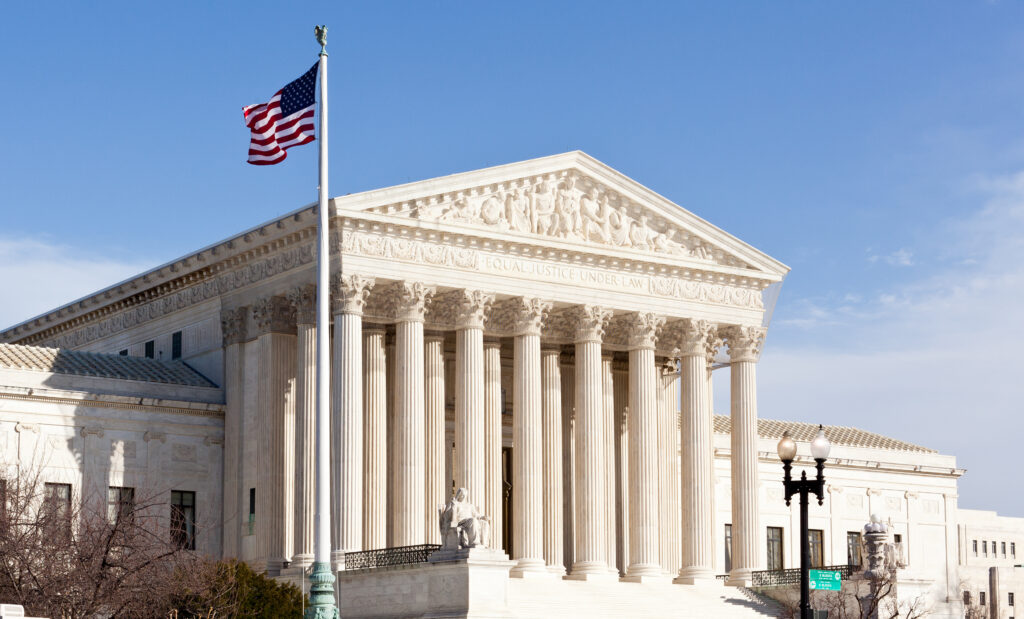Three Fabrications of Roe

By Robert Marshall
This is Issue 75 in the On Point Series.
During oral arguments on December 1, 2021, in the Dobbs v. Jackson Women’s Health Organization late-term abortion case, President Biden’s Solicitor General Elizabeth Prelogar opposed reversing the Supreme Court’s 1973 decisions legalizing abortion. Justice Samuel Alito asked if the 1896 Plessy v. Ferguson decision upholding “separate but equal” treatment of blacks and whites was initially wrong in 1896 and should have been overruled. Prelogar’s answer undid the logic of her opposition to overturning Roe:
Justice Alito: “… suppose Plessy … was re-argued in 1897, so nothing had changed. Would it not be sufficient to say that was an egregiously wrong decision on the day it was handed down and now it should be overruled?”
Solicitor General Prelogar: “It certainly was egregiously wrong on the day that it was handed down … what had become clear is … this idea that segregation didn’t create a badge of inferiority, had been entirely mistaken.”
[…]
Justice Alito: “… Had it come before the Court in 1897, should it have been overruled or not?”
General Prelogar: “I think it should have been overruled, but I think that the factual premise was wrong in the moment it was decided …”
General Prelogar’s answers justify reversing Roe. In the moment Roe was decided, Justice Blackmun was wrong in eliminating all laws in all 50 states protecting unborn children. Three major untruths undergird Blackmun’s egregious decision.
Fabrication #1: Blackmun claimed, “… the unborn have never been recognized in the law as persons in the whole sense” (Roe v. Wade, 410 U.S. 113, 162 (1973)).
In footnote 34 of Roe, Blackmun cited Eugene Quay’s “Justifiable Abortion — Medical and Legal Foundations.”[i] The article’s appendix listed 19 states and Washington, D.C. which had laws in 1961 that punished abortion as manslaughter, second degree murder or provided equal penalties. The Quay article’s appendix also quoted excerpts from 24 state laws that restricted abortion which used the words “child” or “children,” presuming the reality of a living human being, a person. While all 50 states had criminal penalties against abortion in 1973, the year Roe was wrongly decided, 43 of 50 states also presumed the unborn were “persons” by the use of the term “child” or reference to penalties of manslaughter/murder.
In practice, these statutes penalized only the abortionist, and rightly so. The pro-life movement does not believe a woman facing an unplanned pregnancy and targeted by the abortion industry as a means of profit should be subjected to criminal penalties. The culpability rightly lies with the abortion providers who often pressure women into abortions without providing them an opportunity for fully informed consent. This belief by the pro-life movement has consistently been put into practice, as attorney Clarke Forsythe notes, “There is no documented case since 1922 in which a woman has been charged in an abortion in the United States.”
Fabrication #2: Blackmun claimed, “Mortality rates for women undergoing early abortions, where the procedure is legal, appear to be as low as or lower than the rates for normal childbirth” (Roe v. Wade, 410 U.S. 113, 149 (1973)). Forsythe notes that Blackmun’s claim of abortion safety “was a factual assumption that the Court adopted on appeal.”[ii]
Blackmun’s safety claim relied on an unabashed abortion promoter, Planned Parenthood’s Dr. Christopher Tietze, whom he cited in footnote 44. Tietze suggested in 1964 that if a doctor suspected someone had moral qualms about the IUD’s abortifacient action, it would be wise not to “disturb those people from whom this is … of major importance.”[iii]
Tietze also belonged to the Centers for Disease Control’s abortion advisory committee, which prior to 1978 had defined ectopic pregnancy deaths occurring “soon after an attempted legally induced abortion as … abortion-related …” Tietze’s committee would change that. The CDC’s 1979–1980 abortion report stated, “… we exclude all deaths associated with ectopic pregnancies.”[iv]
Additionally, the CDC’s “U.S. Standard Report of Induced Termination of Pregnancy” reporting form stated: “If no complications have occurred at the time the report is completed, check ‘none.’ … This item will provide data regarding the risk of induced termination.”[v]
The CDC knew very well that a great number of abortion complications become evident hours, days, or even weeks after the abortion. Washington State conceded this fact: “The reporting of abortion complications is considered to be incomplete because follow-up care may be administered after abortion reports are filed, or by a second facility or physician.”[vi]
Further undermining “abortion safety” claims has been the shift to chemical abortions. The Charlotte Lozier Institute published a survey in November 2021, using Medicaid claims data over 17 years of 423,000 verified abortions and 121,283 verified subsequent visits to ERs within 30 days of the abortion. The claims encompassed women over age 13 having at least one pregnancy between 1999 and 2015.
Women having chemical abortions had a 22% higher risk of an ER visit for any reason, and a 53% greater risk of an ER visit for abortion-related reasons. By 2015, the rate of ER visits post-surgical abortion increased 315% from 2002-2015, and the rate of ER visits after chemical abortions grew 507% from 2002-2015. Over 60% of abortion-linked ER visits post-chemical abortion in 2015 were miscoded as treatment for miscarriage, evident in the data given that a subsequent pregnancy and a natural miscarriage within 30 days after a confirmed chemical abortion is not physically possible.
The CDC’s claim that abortion was “safe” relied on biased leadership crippling the agency’s methods for complications collection; the CDC has never taken comprehensive action to identify, track and report evidence of harmful abortion complications.
Fabrication #3: Blackmun claimed “… that at common law, abortion performed before ‘quickening’ … from the 16th to 18th week of pregnancy was not an indictable offense” (Roe v. Wade, 410 U.S. 113, 132 (1973)). He was insinuating that the Constitution as crafted by the Founders was compatible with legal abortion.
Blackmun cited English Judge Edward Coke as claiming abortion could never be a homicide. But Villanova Law Professor J.W. Dellapenna notes, Coke’s “only reason for not classifying abortion as homicide was an inability to prove the necessary elements of the crime … English Courts before Coke’s time entertained no doubts regarding the criminality of abortion … These decisions did not turn on the stage of pregnancy … in Maryland … men were charged with murder for inducing an abortion of a pre-quickening child.”[vii]
America has had approximately 63,459,781 children killed through 2021 following the action of the Supreme Court in 1973. This same Court has reversed itself at least 233 times according to the Library of Congress. Given the falsity of the “factual premises,” do we need other reasons for the Court to reverse Roe?
Robert Marshall was a member of the Virginia General Assembly from 1992 to 2018. He is the author of “Reclaiming the Republic: How Christian and other Conservatives Can Win Back America.” Email him at [email protected].
[i] Eugene Quay, “Justifiable Abortion—Medical and Legal Foundations,” Georgetown Law Journal 49, no. 395 (1961).
[ii] Clarke Forsythe, “A Draft Opinion Overruling Roe v. Wade,” Georgetown Journal of Law & Public Policy 16, no. 2 (2018): 445, 465.
[iii] Tietze, Christopher. “2nd International IUD Conference.” Presented at the Excerpta Medica Foundation, Amsterdam, 1964, no. 86, p. 212.
[iv] Centers for Disease Control, “Abortion Surveillance 1979-1980 in CDC Abortion Reports,” CDC Abortion Reports, (1983): 9.
[v] “Handbook on the Reporting of Induced Termination of Pregnancy,” 79-01117, p. 2.
[vi] “Pregnancy and Induced Abortion Statistics, 1991-94,” Washington Center for Health Statistics, last modified 1996, p. 120.
[vii] Joseph Dellapenna, Dispelling the Myths of Abortion History, 1st ed., (Carolina Academic Press, 2006).























